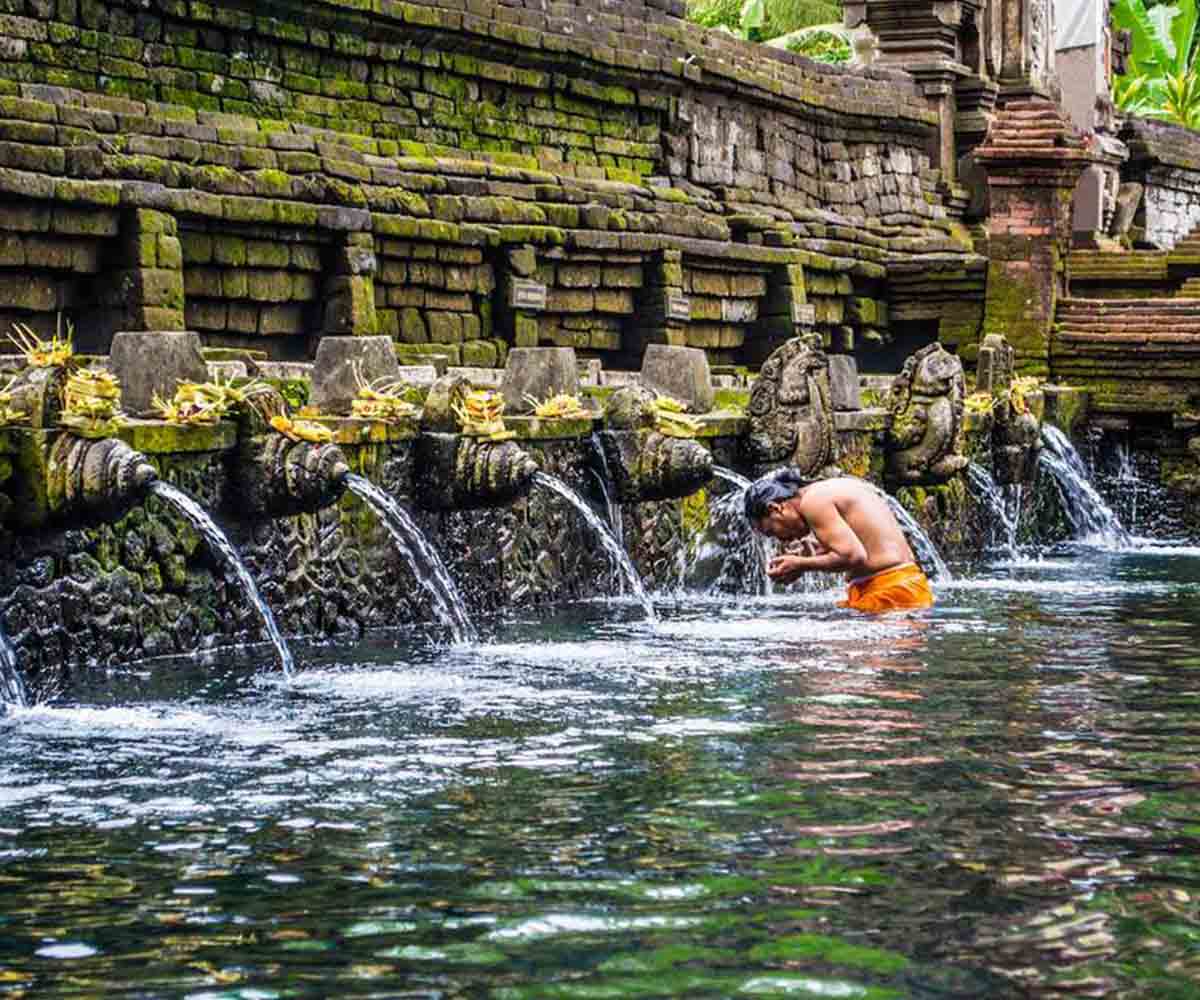
Top Three Must-See Temples in Ubud, Bali
These must-see temples in Ubud offer a glimpse into Bali’s historic legacy with ancient reliefs and classical examples of architecture. They also serve as cool retreats or brief stopovers during your leisurely walks through town. Some are easily accessible and located amongst Ubud’s central landmarks, while others around the neighbouring villages of Tampaksiring are hidden within mountain valleys, adding a bit of mystery to your adventures in this cultural heartland of Bali.
- Goa Gajah
Goa Gajah (Elephant Cave) is a historic site of interest that dates back to the 9th century. The actual entrance to the cave is an ornately carved demon’s mouth. Inside are some fragmentary lingam and yoni statues, as well as a statue of Ganesha (the elephant-headed god in Hinduism). Large carved guards stand around pools near the entrance, and a little path leads to a waterfall, rice fields and some Buddhist stupa fragments. Goa Gajah is located at Bedulu village, Gianyar Ubud, which is only a 15-minute drive from Alaya Resort Ubud.
- Tirta Empul
Tirta Empul is an important temple complex and holy mountain spring, located in the village of Manukaya in central Bali. The site serves as a legendary setting of a traditional tale about good versus evil. It is also a national cultural heritage site. Tirta Empul, meaning ‘holy water spring’ is actually the name of a water source located within the temple. The spring feeds various purification baths, pools and fish ponds surrounding the outer perimeter, which all flow to the Tukad Pakerisan River. Various sites throughout the region and many other archaeological relics relate to local myths and legends. Another nearby and prominent site on top of a hill is the presidential palace, Istana Tampaksiring, built during the years of the nation’s first president.
- Gunung Kawi
Gunung Kawi Temple complex, locally referred to as Pura Gunung Kawi, is one of Bali’s most unique archaeological sites, comprising a collection of ancient shrine reliefs carved into the face of a rock cliff. It’s a popular stopover on itineraries through the central uplands of the Gianyar regency. The temple complex is easily located, only a few hundred meters east from the Jalan Raya Tampaksiring main route. Small stone caves that actually serve as meditation sites complement the shrines, where Buddhist monks used to sit and contemplate. Indeed, Balinese history has shown that the two religions coexisted in harmony. Across the river and beside the first rock shrine complex is the functional temple courtyard that the locals essentially refer to as Pura Gunung Kawi.
Photo credit by guide.baligolive.com.









